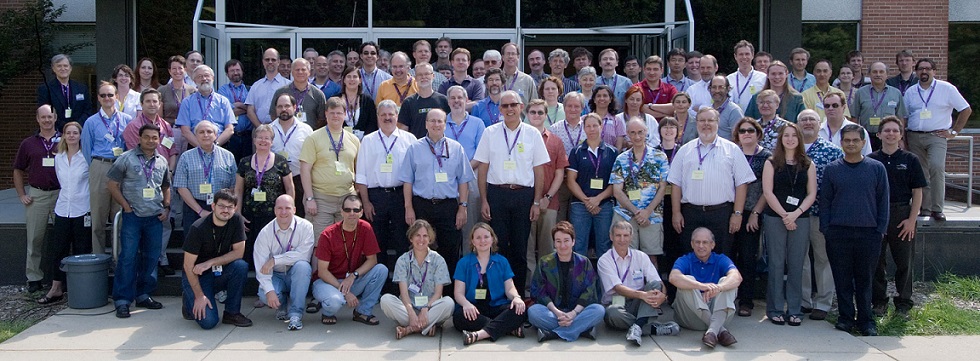
Is technology making us stupid—or smarter than we’ve ever been? Author Nicholas Carr memorably made the case for the former in his 2010 book The Shallows: What The Internet Is Doing To Our Brains. This fall we’ll have a rejoinder of sorts from writer Clive Thompson, with his book Smarter Than You Think: How Technology Is Changing Our Minds For The Better.
My own take: technology can make us smarter or stupider, and we need to develop a set of principles to guide our everyday behavior and make sure that tech is improving and not impeding our mental processes. One of the big questions being debated today is, What kind of information do we need to have stored in our heads, and what kind can we leave “in the cloud,” to be accessed as necessary?
In 2005, researchers at the University of Connecticut asked a group of seventh graders to read a website full of information about the Pacific Northwest Tree Octopus, or Octopus paxarbolis. The Web page described the creature’s mating rituals, preferred diet, and leafy habitat in precise detail. Applying an analytical model they’d learned, the students evaluated the trustworthiness of the site and the information it offered.
Their judgment? The tree octopus was legit. All but one of the pupils rated the website as “very credible.” The headline of the university’s press release read, “Researchers Find Kids Need Better Online Academic Skills,” and it quoted Don Leu, professor of education at UConn and co-director of its New Literacies Research Lab, lamenting that classroom instruction in online reading is “woefully lacking.”
There’s something wrong with this picture, and it’s not just that the arboreal octopus is, of course, a fiction, presented by Leu and his colleagues to probe their subjects’ Internet savvy. The other fable here is the notion that the main thing these kids need—what all our kids really need—is to learn online skills in school. It would seem clear that what Leu’s seventh graders really require is knowledge: some basic familiarity with the biology of sea-dwelling creatures that would have tipped them off that the website was a whopper (say, when it explained that the tree octopus’s natural predator is the sasquatch).
But that’s not how an increasingly powerful faction within education sees the matter. They are the champions of “new literacies”—or “21st century skills” or “digital literacy” or a number of other faddish-sounding concepts. In their view, skills trump knowledge, developing “literacies” is more important than learning mere content, and all facts are now Google-able and therefore unworthy of committing to memory. But even the most sophisticated digital literacy skills won’t help students and workers navigate the world if they don’t have a broad base of knowledge about how the world actually operates. “When we fill our classrooms with technology and emphasize these new ‘literacies,’ we feel like we’re reinventing schools to be more relevant,” says Robert Pondiscio, executive director of the nonprofit organization CitizenshipFirst (and a former fifth-grade teacher.) “But if you focus on the delivery mechanism and not the content, you’re doing kids a disservice.”
Indeed, evidence from cognitive science challenges the notion that skills can exist independent of factual knowledge. Dan Willingham, a professor of psychology at the University of Virginia, is a leading expert on how students learn. “Data from the last thirty years leads to a conclusion that is not scientifically challengeable: thinking well requires knowing facts, and that’s true not only because you need something to think about,” Willingham has written. “The very processes that teachers care about most—critical thinking processes such as reasoning and problem solving—are intimately intertwined with factual knowledge that is stored in long-term memory (not just found in the environment).”
In other words, just because you can Google the date of Black Tuesday doesn’t mean you understand why the Great Depression happened or how it compares to our recent economic slump. There is no doubt that the students of today, and the workers of tomorrow, will need to innovate, collaborate and evaluate, to name three of the “21st century skills” so dear to digital literacy enthusiasts. But such skills can’t be separated from the knowledge that gives rise to them. To innovate, you have to know what came before. To collaborate, you have to contribute knowledge to the joint venture. And to evaluate, you have to compare new information against knowledge you’ve already mastered.
So here’s a principle for thinking in a digital world, in two parts: First, acquire a base of fact knowledge in any domain in which you want to perform well. This base supplies the essential foundation for building skills, and it can’t be outsourced to a search engine.
Second: Take advantage of computers’ invariant memory, but also the brain’s elaborative memory. Computers are great when you want to store information that shouldn’t change—say, the date and time of that appointment next week. A computer (unlike your brain, or mine) won’t misremember the time of the appointment as 3 PM instead of 2 PM. But brains are the superior choice when you want information to change, in interesting and useful ways: to connect up with other facts and ideas, to acquire successive layers of meaning, to steep for a while in your accumulated knowledge and experience and so produce a richer mental brew.



